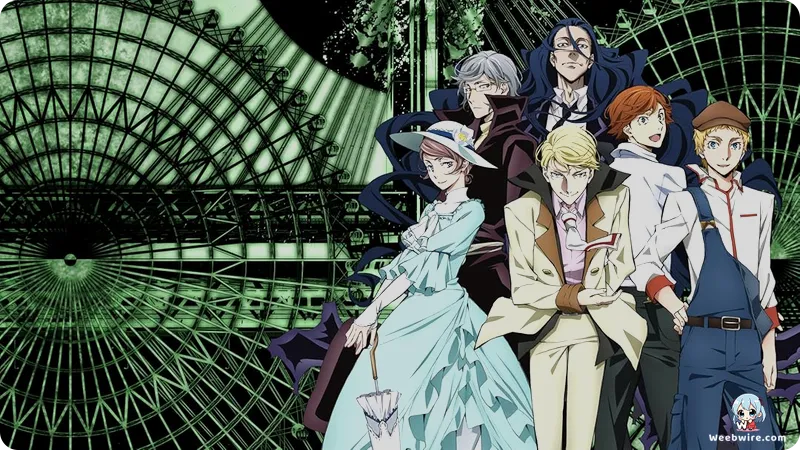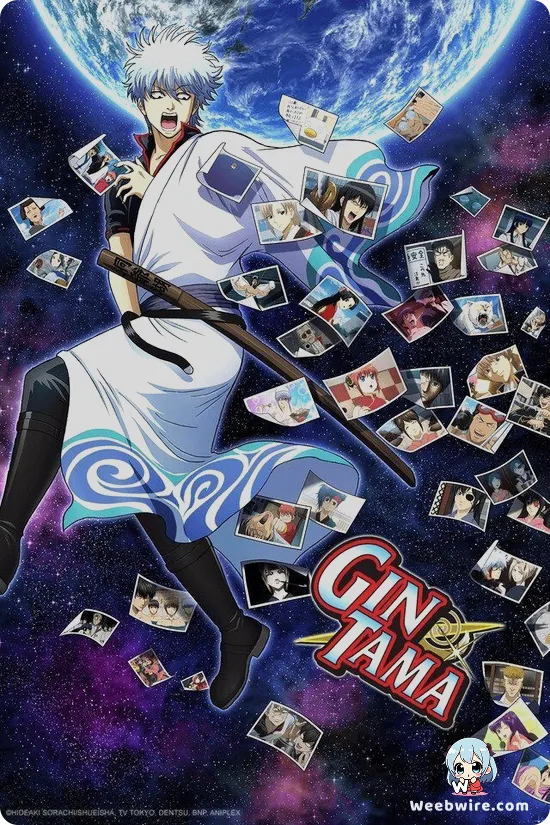Unlocking the Secrets of Bungo Stray Dogs 2: Literary Genius Meets Supernatural Thrills

Prepare to embark on an intellectual odyssey within the vibrant world of anime, where few series dare to intertwine real-world history and profound literary legacy with the masterful precision of 'Bungo Stray Dogs.' While its reputation for thrilling action and supernatural prowess precedes it, the second season, 'Bungo Stray Dogs 2,' stands as a veritable treasure trove of narrative depth, offering insights that elevate it far beyond a conventional shonen adventure. For both ardent fans and curious newcomers, a closer look at its less-publicized facets reveals the intricate intellectual framework bolstering the anime's enduring charm.
Literary Allusions and Character Powers
At the heart of 'Bungo Stray Dogs' lies an ingenious premise: characters are not merely named after celebrated literary figures, but their extraordinary supernatural abilities are often direct, poignant allusions to the most iconic works of their namesake authors. This isn't a superficial gimmick; it's the very bedrock of their identities and the conflicts they navigate. Consider Osamu Dazai, one of the series' most captivating enigmas. His ability, 'No Longer Human,' which allows him to nullify any other power upon contact, is a direct homage to Dazai Osamu's semi-autobiographical novel. The real-life author's battles with melancholy and his numerous suicide attempts are subtly echoed in the anime character's detached demeanor and his almost casual dance with mortality, adding layers of profound psychological depth. This seamless fusion of fictional power and real-world literary output beckons viewers to explore the original texts that inspired their beloved characters, enriching the viewing experience immeasurably.
The 'Dark Era' Arc: A Narrative Masterpiece
'Bungo Stray Dogs 2' distinguishes itself notably through its initial, acclaimed arc known as the 'Dark Era.' This bold narrative choice serves as a gripping prequel, temporarily stepping away from the main storyline's present-day protagonists like Atsushi Nakajima to plunge into the shadowy past of Osamu Dazai as an executive in the formidable Port Mafia. The 'Dark Era' masterfully shifts the series' tone, moving from its usual blend of action and humor to a far more somber, introspective, and ultimately tragic narrative. It meticulously explores Dazai's pivotal relationships with Oda Sakunosuke and Ango Sakaguchi, alongside his intense internal struggle to find purpose in a seemingly bleak world. This arc is absolutely crucial for deciphering Dazai's complex motivations, understanding his eventual departure from the Port Mafia, and appreciating the steadfastness of his ideals, even when they appear contradictory. It humanizes a character often perceived as an untouchable genius, exposing his vulnerabilities and the devastating impact of loss on his psyche.

Studio Bones' Visual Brilliance
The acclaimed animation studio Bones, celebrated for its high-caliber productions such as 'Fullmetal Alchemist' and 'My Hero Academia,' lends its distinctive visual brilliance to 'Bungo Stray Dogs.' In Season 2, Bones' expertise shines through in the exceptionally fluid battle sequences and the nuanced character expressions, which are vital for conveying the intense emotional weight of the 'Dark Era' arc. Their remarkable ability to transition between exhilarating, rapid-fire combat and more subdued, character-driven moments underscores their versatility and unwavering dedication to visual storytelling. The studio's consistent quality ensures that each unique supernatural power is not only visually spectacular but also clearly integrated into the narrative, making every ability feel both distinct and impactful.
Beyond Direct References: Intellectual Allure
Beyond these direct literary references, the series frequently incorporates subtle nods and thematic parallels that amplify its intellectual allure. Fans often engage in vibrant discussions about the historical veracity of certain character traits or the deeper philosophical implications of their powers. For instance, Rampo Edogawa, a character devoid of supernatural abilities, possesses an unparalleled deductive intellect, directly mirroring the revered Japanese mystery writer Edogawa Rampo, widely regarded as the progenitor of Japanese detective fiction. His character embodies the sheer power of observation and logic, serving as a testament to the human mind's capabilities even amidst a world teeming with superpowers. This exquisite blend of the fantastical with grounded intellectualism is a unique selling proposition that continues to captivate and challenge its global audience.
The enduring popularity of 'Bungo Stray Dogs 2,' and indeed the entire series, can be attributed to its profound ability to offer far more than superficial entertainment. It invites viewers into a meticulously crafted world where history, literature, and boundless imagination seamlessly intertwine. The scrupulous attention to detail in character design, plot development, and thematic exploration guarantees that each rewatch unveils new layers of comprehension and appreciation. From the poignant tragedy of Dazai's past to the intricate tapestry of literary allusions, 'Bungo Stray Dogs 2' stands as a captivating case study in how anime can brilliantly reinterpret cultural heritage for a global audience, firmly cementing its status as a truly unique and intellectually stimulating anime experience.
Credits
Bungo Stray Dogs 2
Author
Kafka Asagiri (original story), Sango Harukawa (original art)
Cover Art
Sango Harukawa
Studio
Bones
Publisher
Kadokawa Shoten
Producers





